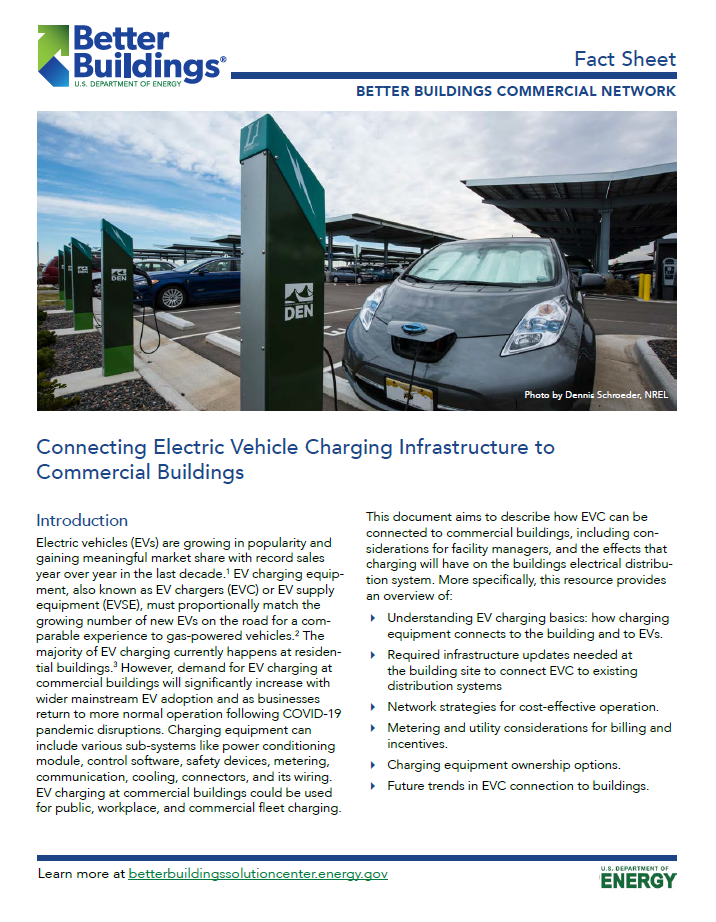Commercial, Distributed Energy Resources, GHG Emissions - January 27, 2023
Connecting Electric Vehicle Charging Infrastructure to Commercial Buildings
While most EV charging currently happens at residential buildings, demand for EV charging at commercial buildings will significantly increase with wider mainstream EV adoption and as businesses return to more normal operations following COVID-19 pandemic disruptions.
This factsheet from Better Buildings and NREL (National Research Laboratory) describes how EV chargers (EVC) can be connected to commercial buildings and the effects that charging will have on the building's electrical distribution system, including an overview of:
- Understanding EV charging basics: how charging equipment connects to the building and to EVs
- Required infrastructure updates needed at the building site to connect EVC to existing distribution systems
- Network strategies for cost-effective operation
- Metering and utility considerations for billing and incentives
- Charging equipment ownership options
- Future trends in EVC connection to buildings
Download this factsheet from Better Buildings and NREL:
Read These Related Articles:
- Case Study: Marriott Infrastructure Resilience & Adaptation (MIRA) Program
- Building Operators: Grid and Occupant Training
- MGM Resorts’ 100-Megawatt Solar Array: Climate Action Through Solar Farming
- Case Study: Daimler Truck North America Plant – Detroit®
- DOE Recognized 14 Organizations for Excellence in Integrated Lighting
Share this valuable information with your colleagues using the buttons below:
« Back to NewsStay Up-To-Date












